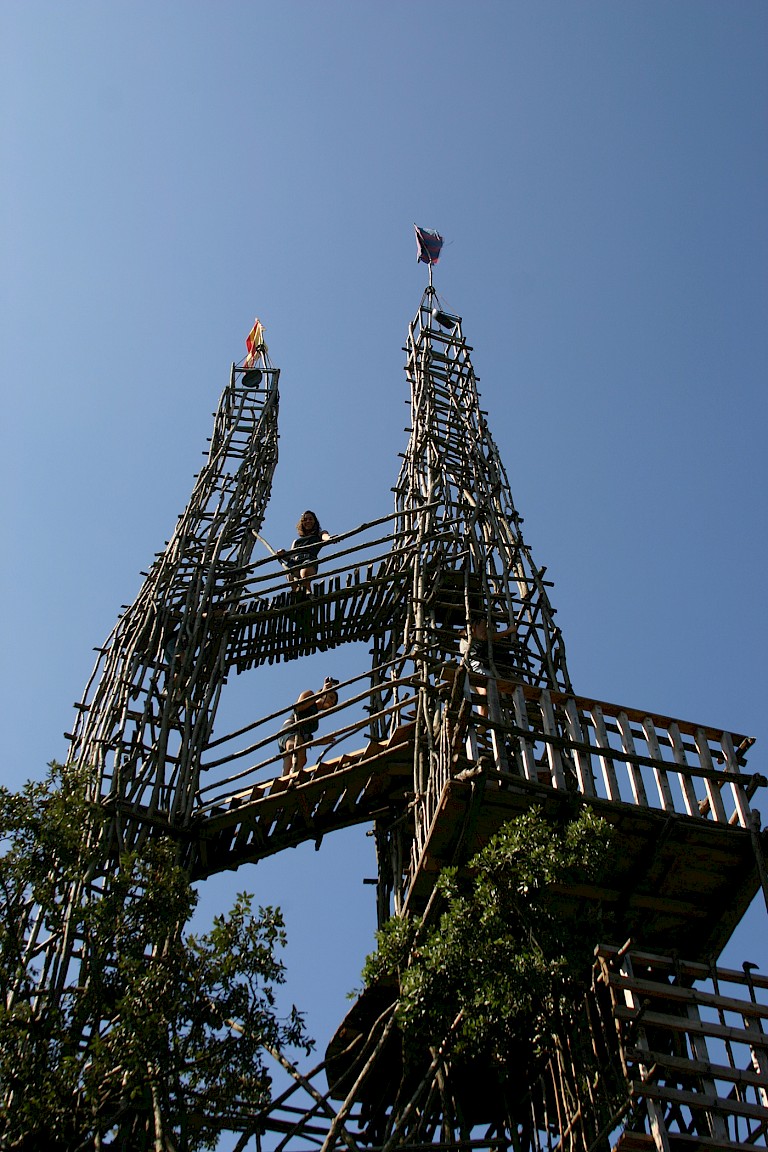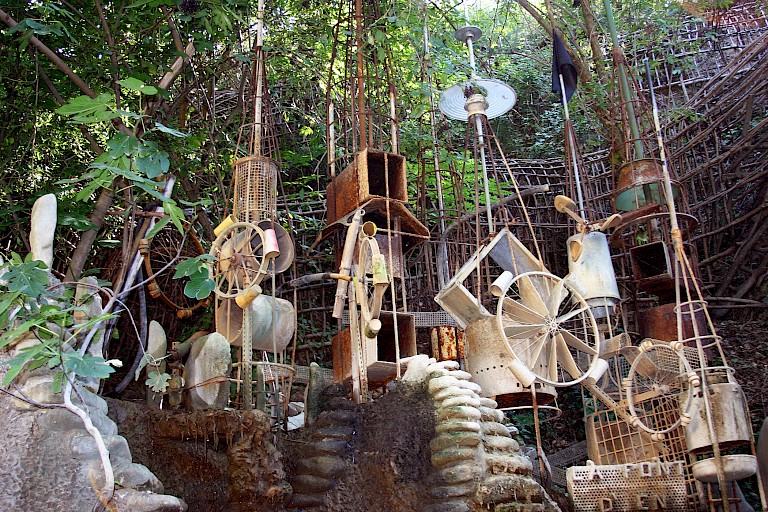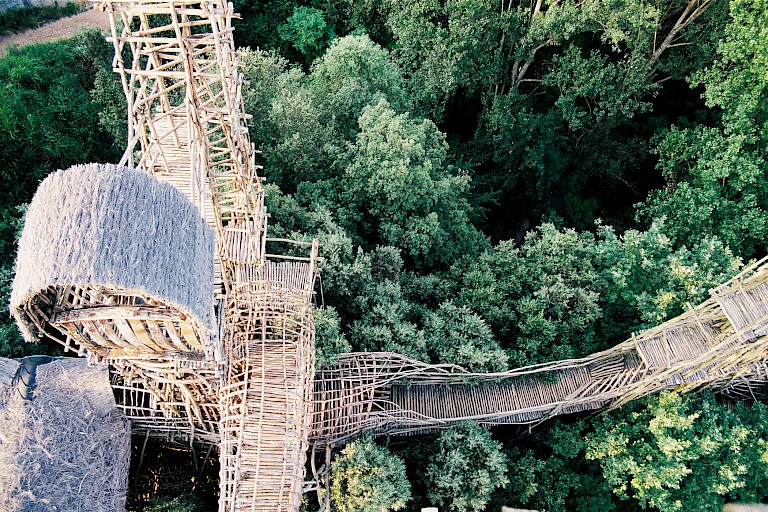



Although Pujiula’s artwork initially challenged traditional community aesthetic norms, visitors’ enjoyment of his project ultimately encouraged his continued efforts, and his work became emblematic of their own sense of place. Working alone, with impressive technical prowess, he constructed powerful, soaring spires as well as graceful passageways and shelters with superficially fragile materials. Rigorously disciplined, he confidently adjusted to changes, opportunities, imperfections, and a lack or abundance of materials, improvising and integrating contingent elements. Art and architectural historians might be startled to learn that no formalized written plans ever existed for his elaborate constructions.
His decades of labor confirmed that the process was as important as the evolving artwork, and he arranged and rearranged components as his eye and intent constantly responded to the site’s evolving physical form. Driven by an innovative, graceful, and powerful aesthetic, evocative of the surrounding foothills, he was also inspired by the desire to involve community members and passersby in his work. Tens of thousands of visitors passed through the site annually. Their ability to physically interact with Pujiula’s constructions energized and emotionally impacted them: “Thanks for making us feel like children,” read an anonymous note.
In 2002, Pujiula was forced to destroy the first iteration of his spectacular public project by the village government and state authorities, despite petitions from protesting supporters worldwide. Yet, undaunted by the demolition, Pujiula moved to a nearby site, and began again. The third, monumental version (2007-2011) was elegant and extremely complex, as evidenced by his maturing aesthetic sense and his sharpened technical skills. To enhance durability, he also began working in stone, concrete, and steel, and soon his constructions again had become one of the world’s largest art environments, comprising eight towers, a new labyrinth, and numerous kinetic sculptures and cascading fountains.
Nevertheless, in 2012 Pujiula was forced yet again to dismantle and burn all of the wooden components. Today Puijula—along with the energized villagers and thousands of international supporters—is fighting to save and conserve what remains. His work has become the very symbol of Argelaguer, while at the same time it has gained increasing global importance, thanks to his innovative design, the monumentality of the construction, and his formidable tenacity, working for decades despite repeated challenges.
At age 77, Pujiula continues to build. Despite challenges from the authorities, his work has been a positive resource that serves to support community identity and enhance its sense of place. If his work were recognized and honored for its contributions, perhaps it would expand the very definition of what public artwork can be.
All copyright belongs to Shanghai Academy of Fine Arts, Shanghai University.



